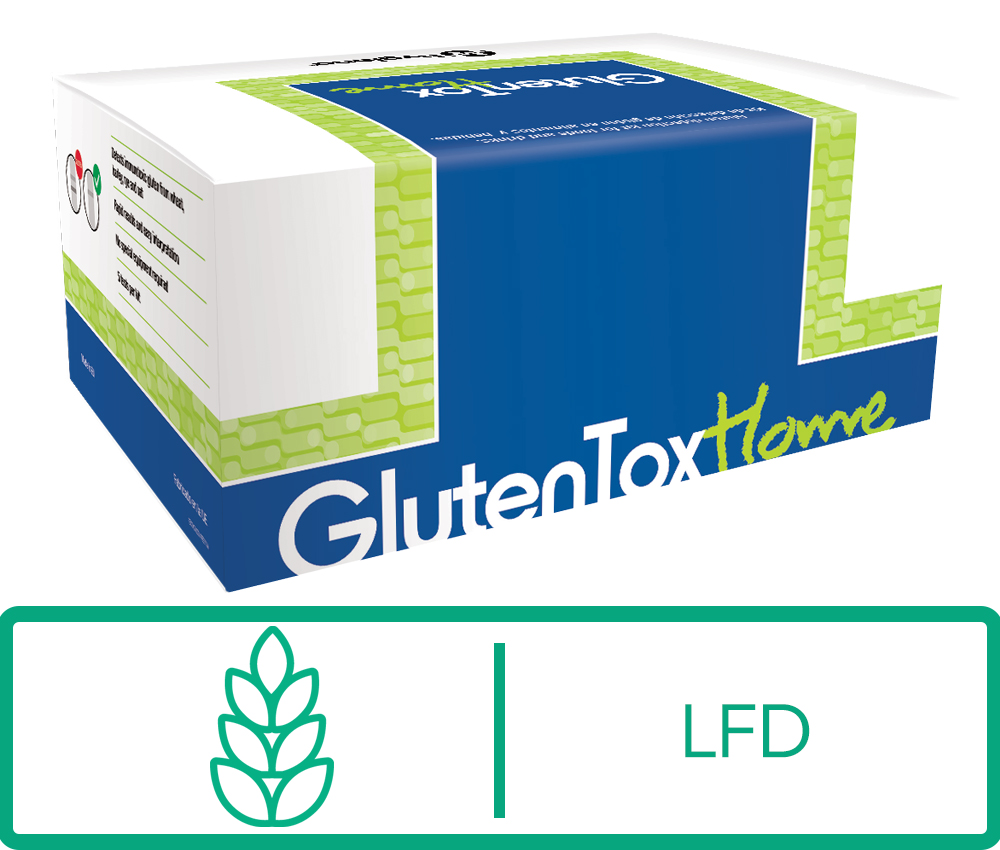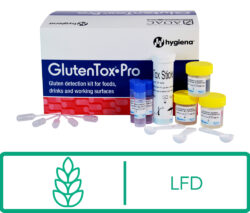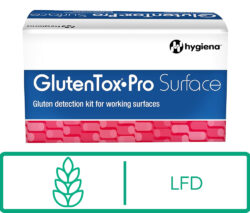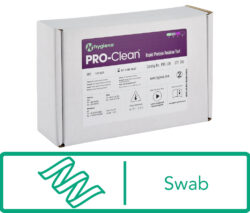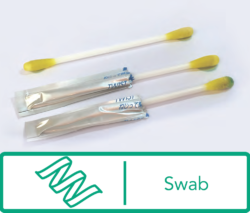Sale! Hygiena GlutenTox® Home: for home testing! 4/2026 expiry
$32.00 – $139.20Price range: $32.00 through $139.20
Description
Hygiena GlutenTox Home: for home testing!
Sale! Special 20% discount while supplies last!
GlutenTox Home 2-test kit expiring 4/2026
GlutenTox Home 5-test and 10-test kit expiring 4/2026
- KT-5000, KT-5472 / KIT3010, KIT3009
- Rapid test for the detection of Gluten
- 2-, 5- and 10-tests for foods and beverages
- Qualitative Results. LOD: 5ppm or 20ppm
GlutenTox Home (KT-5000 / KIT3010, KT-5472 / KIT3009) is a quick, user-friendly test to detect gluten in foods, drinks, cosmetics, or any other substance. It’s useful for anyone who lives with celiac disease, or keeps a gluten-free diet for any reason.
-
Adjustable sensitivity: test for 20ppm or 5ppm of gluten depending on your specific needs
-
No special equipment required; everything but the test material is included in the kit
-
Safe, non-toxic, and easy to use
-
Quick response: a reliable answer in less than 20 minutes
-
The included G12 antibody recognizes the toxic fraction of gluten in wheat, barley or rye.
Kits contain everything you need to test for gluten in foods, drinks or ingredients. Kits are available in 2-, 5- and 10-test quantities.
Looking for more details about our GlutenTox Home kit? Check our FAQ, or contact us with any questions.
Orders will be shipped within 2 business days of your order via UPS Ground. If expedited service is required, please contact us to confirm availability.
All sales are final. For more information, please see our Terms & Conditions.
If shipping to a Canadian address, please visit glutentox.net.
What is a lateral flow test?
Lateral Flow Devices (or LFDs) refer to a category of test designed to detect the presence or absence of a particular substance, without the need for sophisticated lab equipment. Through capillary action, the sample is brought along the length of the test and – if the substance in question is detected – will cause a visible signal to appear. The most commonly-seen type of LFD test on the market today is the over-the-counter pregnancy test.
How sensitive are the GlutenTox tests?
All GlutenTox tests have a flexible LOD for food testing, and the sensitivity of each test can be set by the person performing the analysis. GlutenTox Home can be set to 5 or 20ppm.
According to the Codex Alimentarius Commission, the FDA and Health Canada, food can be considered “gluten-free” if it is made without gluten-containing ingredients and the amount of gluten present due to cross-contamination does not exceed 20 parts per million (ppm).
What is the G12 antibody?
The G12 antibody was created to target the 33-mer peptide of the alpha-gliadin molecule. Studies show that this peptide is the primary cause of the auto-immune response in celiac patients. This leads to a high correlation between positive test results and samples that are toxic for people with celiac disease. If a food or beverage sample contains this toxic peptide in sufficient quantity, it will trigger a positive response from GlutenTox.
G12 is able to recognize gluten in wheat, barley, rye and certain strains of oat (for more on oat toxicity, see question below). It is also uniquely well-suited to detecting gluten in hydrolyzed, fermented, or otherwise processed foods. In addition, the G12 antibody shows no cross-reactivity with soy or any other gluten-free matrices.
Emport is pleased to share some details from Hygiena regarding the G12 antibody, specifically developed to identify the 33-mer peptide of α- gliadin. Read more in our News post on the G12 antibody.
GlutenTox Home and Science Fairs
Science Fairs are a great way for your child to explore their world, especially when their project involves something that affects them directly. It’s also a great way for your child to reach out to their classmates and increase awareness of an everyday issue. For a child with celiac disease, the annual Science Fair can be an excellent time to learn about gluten and the realities of trying to maintain a strictly gluten-free diet.
Explore Emport’s resources for you and the budding scientist in your life. You can access articles, suggested experiments, and a special offer for Science fair participants.
What is the expiration date of the kit?
Expiration dates are clearly printed on each kit, but are generally at least six months from the ship date. You will know if you are using a test that has expired because the blue control line will not appear when you run the test.
At what temperature should I store the kit?
All kits can be stored at 35°F – 85°F. We do not suggest storing kits in the refrigerator, as excess moisture can damage the test strips.
How should I dispose of the kit after use?
All components of the kit are non-toxic and therefore fully disposable in ordinary trash. They can be recycled where appropriate according to the material.
How do I test a food or beverage sample for gluten?
Full directions are supplied with the kits; but you can download the GlutenTox Home Manual (in English or Spanish). Want to check for evidence of cross-contact on surfaces? Read our article on testing surfaces. Contact Emport staff with any questions.
Does the G12 antibody recognize oat?
Yes and no. G12 can of course detect cross-contamination in oats samples, whether from barley, rye, or wheat. In addition, research indicates that some strains of oat are inherently toxic for people with celiac disease and do contain gluten even when 100% pure oat. If the oat being tested is potentially harmful for celiac disease patients, a positive signal will appear. If you’d like to read more about gluten in oats, we recommend this study on gluten in oats. You can also visit Celiac.com for an analysis of the study.
After 10 minutes, the test showed a negative result (only the blue control line appeared). But when I checked the test strip the next day, I noticed a faint pink line. What’s going on?
The test results should be read at 10 minutes (not before and not after). Any faint lines that appear after this time limit are not valid and do not indicate the presence of gluten in the sample. Conversely, positive results may fade in intensity after 10 minutes. If the test shows a pink line and a blue line at 10 minutes, it’s positive. If the test shows only a blue line at 10 minutes, it’s negative.
I got a test result that surprises me. What do I do?
If your results are unexpected, please email us with more information about your test. We’ll work with you until your questions are resolved.
Are there items GlutenTox is not recommended for?
- Antioxidants, polyphenols, and tannins: Gluten found in matrices that are high in antioxidants, polyphenols, or tannins (for example cocoa or tea) can be difficult to extract. For this reason, it is possible that the amount of gluten present in these samples can be underestimated. If using GlutenTox Sticks, a separate polyphenol additive is available that can appropriately extract gluten from these matrices. Please note a positive result will always indicate the presence of gluten in the sample.
- Maggi – Seasoning – Arôme (liquid sauce): This seasoning sauce contains gluten as described by the manufacturer in its ingredients list. Note that its manufacturing process and other active ingredients are not suitable for GlutenTox Home. Consider this food as containing gluten.
- Soy Sauce: Naturally brewed soy sauce undergoes a fermentation process that often breaks down gluten to level close or below the detectable limit.
- Highly processed and complex matrices: Although GlutenTox Home and Pro tests have been successfully tested against a wide variety of highly-processed matrices, there may be some cases in which a more thorough extraction process is required to identify traces of gluten (for example, the multi-step extraction options available via GlutenTox Sticks). If you are planning to test a vitamin, supplement, medication, or other products that you feel may be highly processed, please contact us with more information about the specific item — we may recommend various modifications. In all cases, a positive test result always indicates the presence of gluten: to date no false positives have been found with G12.
- Items that are very high in silica: Large amounts silica can cause the extraction solution to “gel” in a way that can create challenges for the sample preparation process. These items often require special analysis in a laboratory setting. If you would like to test these items with GlutenTox, we suggest using half the amount of sample and double the number of drops as recommended in the manual.
- GlutenTox has been validated against some but not all personal care products. Because of the wide range of formulations and ingredients within personal care products, we recommend additional caution when testing shampoos, lotions, cosmetics, and other non-food items. While a positive result does always indicate the presence of gluten, false negatives are possible.
Can I test beer for gluten?
The short answer is that while you can certainly trust that any positive test results with GlutenTox are indeed positive for gluten, the possibility for false negatives is also real. All lateral flow kits for gluten face the same challenge when it comes to heavy hydrolyzation, malting, or fermenting – there is a small gray area where it’s possible for beers (or soy sauce, etc) to have their proteins broken-apart enough that they don’t register on tests, but still intact enough to possibly trigger a celiac response.
Below you’ll find some information relating to gluten detection in beers, including so-called ‘gluten-removed’ beers that use enzymes to degrade the malted barley.
- When it comes to testing for gluten in beer, antibody-based testing is currently the gold standard. An antibody is developed that looks for specific, short chains of amino acids that are unique to gluten (ie, not cross-reactive or found in other, safe foods). These short chains are called epitopes.
- Lateral flow / rapid kits require two copies of the chain – two epitopes – to “catch” the gluten molecule. For the G12 antibody, the epitope is found three times on the 33-mer peptide, which is known to be highly immunotoxic. So as long as the peptide is 2/3 intact, it should be identifiable.
- The most common type of lab test, a Sandwich ELISA, also requires two epitopes in order to identify gluten. There is a type of ELISA called a Direct or Competitive ELISA that only requires one epitope, but very few labs are trained to do these. They’re quite delicate and have not been validated as thoroughly as Sandwich ELISAs.
There are situations where a beer could have small fragments of gluten in it that are too small for rapid tests to pick up (but that a Competitive ELISA could quantify). It’s generally accepted that these beers would not be celiac-safe. - There are also situations where a beer could have small fragments of gluten that are too small for even a Competitive ELISA to pick up – and there is no consensus within the communities about whether or not these beers would be celiac-safe.
Can I test the oil in my deep fryer?
Oil is inherently gluten-free, and the primary risk of cross-contamination comes from the gluten-containing crumbs that may be floating in the oil and could potentially adhere to otherwise gluten-free food. The recommended process for verifying that a deep fryer or fryolater is safe for use is to filter the oil and collect the crumbs and other residue that are found. Pat and/or rinse the residue to remove as much excess oil as possible, and then test the residue using GlutenTox standard procedures for crumbs or powders. If the residue produces a negative test, you can consider the oil safe for use with gluten-free items.
Contact us for CoAs, SDS and validation sheets.
Search our Document Library for Manuals, IFUs and more.

